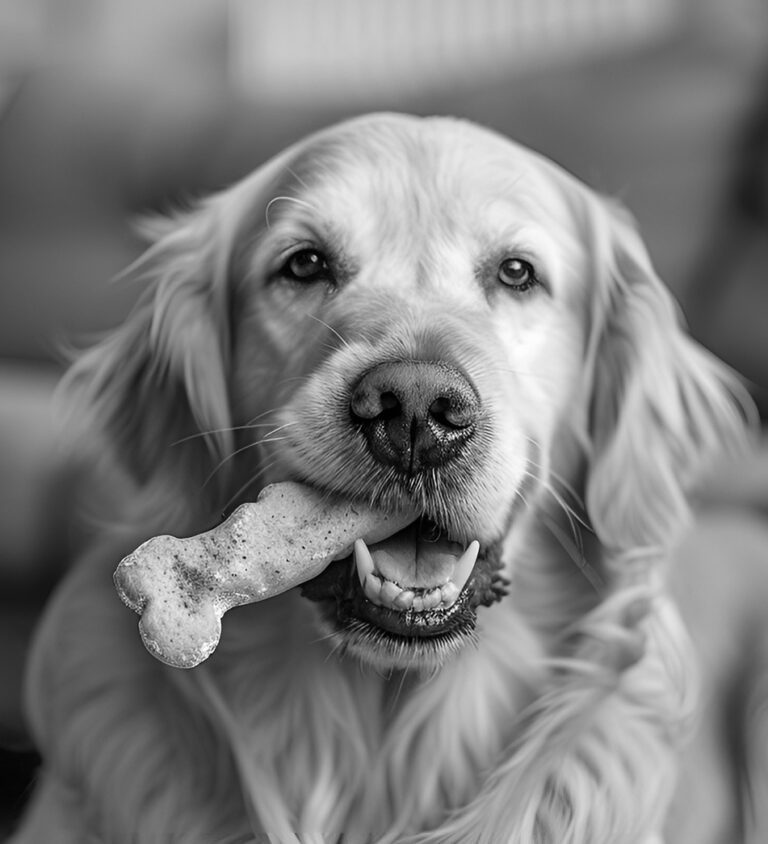
Dental Care
We take a comprehensive approach to dental care.
At EastOver Vet, we believe caring for your pet’s teeth is critical to their overall health. Our dental services are designed for preventing, diagnosing, and treating oral and dental conditions for dogs and cats. Remember that it is important to identify and treat dental problems early, before they become serious and cause pain to your pet. Serious dental issues often require extractions which, left untreated, can affect your pet’s overall health. If your pet has not had a dental examination in at least a year, please give us a call today to schedule an appointment.
Key aspects of our pet dental care includes:
- Dental Examinations: Regular dental check-ups at your pet’s wellness exam to visually assess the health of your pet’s teeth and gums.
- Dental X-Rays: Used to diagnose issues that are not visible to the naked eye, such as problems below the gumline or within the jaw.
- Professional Dental Cleaning and Scaling of Teeth: Professional cleaning under anesthesia to remove plaque and tartar buildup, a preventative to prevent gum disease and tooth decay. For more information, please see Professional Dental Cleaning below.
- Periodontal Treatments: Procedures to treat gum disease, which is common in pets and can lead to more serious health problems if left untreated.
- Extractions: Removal of damaged or diseased teeth that cannot be saved, which can alleviate pain and prevent further health issues.
- Oral Surgery: Surgical interventions for more complex dental issues, including repairing fractures or treating tumors.
- At Home Preventive Care: Educating pet owners on how to maintain their pet’s dental health through regular brushing, proper diet, and the use of dental chews or toys.
At EastOver Vet, we perform professional dental procedures with the use of general anesthesia, a key component that allows us to obtain an accurate oral diagnosis and provide comprehensive treatment. The use of general anesthesia for dental procedures in pets is considered the standard of care. We utilize the safest anesthesia protocols available, including pre-anesthetic bloodwork to be sure your pet is healthy to receive anesthesia.
For more information about dental care and disease in pets, please review the topics below.
PROFESSIONAL DENTAL CLEANING AND SCALING OF TEETH
Many people are surprised to find out that animals have similar dental and oral problems and require similar types of dental treatments as humans. In fact, just like in humans, your pet’s oral health is a key component to your pet’s continued good health. The veterinarians at EastOver Vet are experienced in providing comprehensive veterinary dental cleaning, periodontal treatments and oral surgery services for dogs and cats.
A comprehensive, Professional Dental Cleaning and Scaling at EastOver Vet includes:
- Comprehensive oral exam to identify the dental issues that may be causing oral pain to improve your pet’s quality of life.
- Comprehensive physical exam, including pre-anesthetic blood testing, to check the health status of your pet’s vital organs and to assess your dog’s general health.
- Diagnostic X-rays using high-tech digital dental X-ray equipment. These digital X-rays allow us to visualize under your pet’s gum line to evaluate your pet for periodontal disease, fractured teeth & oral cancer.
- IV Fluids, General Anesthesia & Electronic Monitoring. We are highly experienced in pet anesthesia and use only the safest anesthetic protocols. Your pet’s anesthesia will be individualized to their specific needs and your pet will be fully monitored throughout the entire dental process.
- Thorough professional teeth cleaning and polishing, making the teeth more resistant to plaque retention. A smooth tooth surface is difficult for plaque to adhere to.
- General anesthesia is required for all pet dental cleaning procedures and for pets requiring dental radiographs. If you have any questions about anesthesia and your pet, please contact us.
ANESTHESIA AND THE DENTAL PROCEDURE
We understand many people are concerned or anxious about anesthesia. If you have questions or concerns about anesthesia, please let us know – we take anesthesia safety seriously. We utilize the safest anesthesia protocols available, including:
Pre-anesthetic fasting.
Healthy adult dogs should not eat for 12 hours before anesthesia to reduce the risk of regurgitation and aspiration. Puppies under 16 weeks old or dogs weighing less than 2 kg should not fast for more than 4 hours. Dogs should have access to water until they receive sedatives or pre-anesthetic medications.
Pre-anesthetic examination and bloodwork. We require a pre-anesthetic examination and bloodwork.
These tests are important to evaluate your pet’s health, we want to be sure your pet is healthy and doesn’t have any underlying health problems that might prohibit anesthesia.
Individualized anesthetic protocol.
Each pet receives a personalized anesthesia plan tailored to their individual needs.
Monitoring.
During anesthesia, your pet will receive monitoring and care comparable to what you would receive if you underwent anesthesia. This includes IV fluids, warming blankets, monitoring heart rate, respiratory rate, oxygenation levels, blood pressure, and more.
PERIODONTAL DISEASE IN DOGS AND CATS
Periodontal disease is an inflammation of some or all of a tooth’s deep supporting structures (gingiva, cementum, periodontal ligament, and alveolar bone). It is known as the “silent” disease because in dogs and cats it is often present but not treated until it is severe. Periodontal disease may be associated with damage to internal organs in some pets as they age. Periodontal disease is entirely preventable.
By three years of age, most dogs and cats have some evidence of periodontal disease. Periodontal disease is the most common medical condition occurring in adult dogs and cats. Other than bad breath, there are only a few signs of the disease process evident to the owner. It is important to your pet’s health to perform professional dental cleanings and periodontal therapy throughout your pet’s life, before it is too late to prevent extensive disease and tooth loss.
EARLY STAGE PERIODONTAL DISEASE IN PETS
Periodontal disease begins when bacteria form on teeth in a substance called plaque. Plaque is formed by food particles, saliva and bacteria. When not brushed off, plaque hardens to form calculus (tartar). Calculus provides a rough surface where plaque can more easily accumulate. Once the plaque gets under the gum, it starts causing gum irritation which leads to an inflammatory condition called gingivitis. Gingivitis is the initial, reversible form of periodontal disease. It is evidenced by a reddening of the gums directly bordering the teeth. If this inflammation is not controlled, the bacteria within the gingiva change to a more virulent type. These more virulent species create more severe inflammation that leads to irreversible periodontitis.
ADVANCED PERIODONTAL DISEASE IN PETS
After an extended period, the calculus eventually builds up under the gum and separates it from the teeth. Spaces will form under the teeth, fostering bacterial growth. This usually leads to bone loss, tissue destruction and pus formation in the cavities between the gum and teeth. Effects within the oral cavity include damage to or loss of gum tissue and bone around the teeth, development of a hole (‘fistula’) from the oral cavity into the nasal passages causing nasal discharge, fractures of the jaw following weakening of the jaw bone, and bone infection (‘osteomyelitis’). Bacteria from the mouth can enter the bloodstream and are carried around the body. Studies in dogs have shown that periodontal disease is associated with microscopic changes in the heart, liver, and kidneys.
PERIODONAL DISEASE PREVENTION
There is a wide range in the appearance and severity of periodontal disease in pets. The cornerstone of periodontal disease prevention and periodontitis therapy in pets is a professional dental cleaning and scaling of teeth, known as “the Prophy”. By definition a dental prophylaxis is the use of appropriate procedures and/or techniques to prevent dental and oral disease and malformations. The essence of Prophy therapy is to control plaque or the subgingival infection and retard reinfection. Please call us today and schedule a dental evaluation for your pet. We will be happy to answer all of your questions regarding our methods of periodontal disease prevention and professional dental cleaning.
RECOGNIZING DENTAL DISEASE IN PETS
Recognizing the signs of dental disease in your pet is the first step to a healthier pet. You must lift the lips of your pet in order to see the teeth and gums before you can make any decisions. Use your senses of sight, smell and touch to evaluate the health of your pet’s mouth. Normal teeth have a uniform white color and the gums have a light pink color throughout. If you see any redness or discoloration present on the teeth or gums that is an indication of dental disease. If you smell a foul odor coming from the mouth that is also an indication of dental disease. If you touch the teeth and they move or the gums and they bleed that is often an indication of a more serious condition called periodontal disease.
Many painful dental conditions develop gradually, and are more common in middle-aged and older pets. As a result, behavior that the owner interprets as “acting grumpy” may be the result of dental pain. Owners often observe that their pet acts “years younger” following dental treatment.
Behaviorally, you may see changes in eating such as dropping food, excessive drooling, even running away from the food bowl after starting to eat. In almost all cases your pet will not express their pain but will choose to suffer in silence instead.
Our veterinarians are trained to recognize dental disease; therefore, it is best to start with an examination. Signs of oral and dental diseases in dogs and cats:
- Bad breath.
- Loose teeth or teeth that are discolored or covered in tartar.
- Your pet shies away from you when you touch the mouth area.
- Drooling or dropping food from the mouth.
- Bleeding from the mouth.
- Loss of appetite or loss of weight (this combination can result from diseases of many organs, and an early veterinary examination is important).






